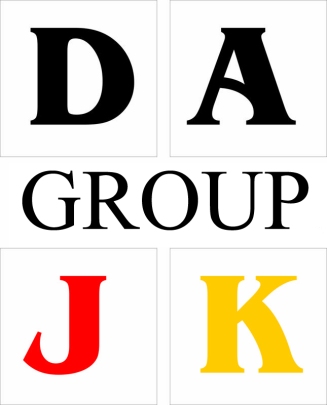Commercial Real Estate’s Cap Rate is average 436 bps over 20 years reference to Federal Reserve’s 10-Year Treasury Rate. In fact, its average from 1990 to 2000 is 450 bps and its average from 2002 to 2015 is 425 bps.
Transactions in 2015 are on course to exceed pre-recession peak levels, and most property sectors continue to see inflows of equity and disciplined underwriting by debt providers. With positive economic trends lifting gauges of property performance, commercial real estate remains a favored asset class on a risk-adjusted basis.
Another words, the sophisticate and savvy CRE’s investor are studying and analyzing carefully its Federal Reserve’s 10-Year Treasury Rate in order to make an informed decision on his next acquisition. It would help reduce his risk significantly.
Commercial property sectors continue to perform well amid this extended period of low interest rates and the Federal Reserve’s decision will not disrupt property performance
- The Federal Reserve opted Thursday 9/17/15 to maintain its benchmark lending rate at or near zero percent. While acknowledging that the U.S. labor market continues to improve, the central bank also heeded softer conditions in foreign economies in reaching its decision to defer the first hike in the Federal Funds rate in approximately nine years. Fed Chair Janet Yellen and voting members of the policy committee will proceed cautiously, monitoring for contagion risks from other countries that could adversely affect U.S. economic performance.
- The Fed’s next opportunity to take up the rate hike question comes at its meeting next month, but it may wait until December to act. Until the next meeting, the Fed will scrutinize incoming data on economic momentum, inflation trends, and international volatility. Mortgage spreads widened during the summer in anticipation of a rate increase, and little appreciable effect on spreads is likely to occur in the near term.
- The central bank’s decision to hold will likely spark a new round of questions about the strength of the U.S. economy in spite of relatively strong underlying fundamentals. Through August, the labor market had added an average of 212,000 jobs per month, an amount less than the pace set in 2014 but sufficient to support a forecast of 2.7 million positions this year. Factors weighing on the U.S. economy, however, include soft exports stemming from the strong U.S. dollar and anemic inflation principally related to low gas prices. Core inflation, which strips out volatile food and energy, rose only 1.8 percent year over year, below the Fed’s target threshold of 2.0 percent.
- Commercial property sectors continue to perform well amid this extended period of low interest rates and the Federal Reserve’s decision will not disrupt property performance. With job growth generating new commercial space demand that dramatically outpaces construction levels, vacancy in the primary property segments remains on track to decline this year and support additional rent gains. Apartment construction has ramped up, but favorable demographic trends and challenging conditions for first-time homebuyers will continue to sustain extremely low vacancy in the multifamily sector.
- Low-interest rates, steady performance gains, and competitive yields are supporting investment in a wide array of commercial properties. Transactions in 2015 are on course to exceed pre-recession peak levels, and most property sectors continue to see inflows of equity and disciplined underwriting by debt providers. With positive economic trends lifting gauges of property performance, commercial real estate remains a favored asset class on a risk-adjusted basis.
Learn more of investment in Net lease CRE
Should you have further clarification, please sign-up for our free 30-minutes confidential consultation.
Related blogs:
- Big Buyer of Net Lease Report – March 2015
- Top 6 Terms You Should Know Before Investing in net lease commercial real estate
- First Key selection of net lease Commercial Real Estate investment…?
- Net Leased Commercial Real Estate (NNN CRE): Step #2
- Should you invest in Net leased commercial Property? Or Multifamily or Self-Storage?
- How much McDonald invests in net lease commercial real estate?
- TOP Net Lease CRE Investment Books – April Selection! **Additional 10% discount!
- Case Study: Sale-Leaseback Technique of Wendy’s and McDonald
- What is an alternative investment real estate versus vacation home…?
- In Hong Kong, the “Mosquito Apartments” sells for $US 2,872 per square foot
- Net lease or Triple-net Lease is an Alternative Solution for Removing 12 Headaches in Real Estate Rental
- Net Lease Case Study: Family Dollar
If you would like to inquire about our Concierge Services, please sign-in our free consultation

Decade of Peace sculpture: “The Sporting Chances for Peace”
This limited edition #1 is no longer available for sale. However, the remaining of Edition 1799 sculptures is available for pre-order. Please note we are also seeking for:
- Art Collectors/Investors
- Sponsors
- Long-term Lease
We are processing and engaging with our investor regarding Limited Edition #1. When it’s finalized in 4Q 2015, the press conference will be announced the owner of this Edition #1. Our investor has committed to the purchase price of $US 50 million.
Once this public announcement is scheduled, our remaining editions’ price will be raised at a minimum of $US 500,000.

Partnership
We are proud to be a partner of HEAG Medical Community of Ghana. [Learn more…]
DAJK GROUP is the place where investors, business owners, and entrepreneurs can research and find useful information, insight, resources, advice, guidance, and inspiration for acquiring funds for their project, acquisition for their net lease commercial real estate, increasing their assets and running their profitable business.
Our group of expert Oil Trader, Commercial Real Estate Specialist, Asset Management, and Business & Financial Analyst, can help to answer all your questions and to provide you with investment alternative and options catered to your investment strategy. Sign-up for a free 30-minute consultation with us now!






























